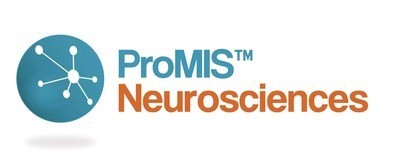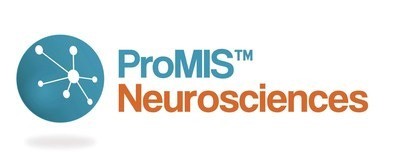ProMIS lead program PMN310: Potential Next Generation Therapy for AD
Producer cell line development has been completed. We have manufactured material to be used in Good Laboratory Practice (GLP) toxicology studies and are on track for producing current Good Manufacturing Practice (cGMP) material for use in the initial clinical trials of PMN310, if allowed to proceed. We have completed pilot toxicology, pharmacokinetics (PK) and tissue cross reactivity (TCR) studies and secured slots for the formal GLP studies that are required for an investigational new drug (IND) application. Development of assays to measure drug levels in nonhuman primates was completed in the second quarter of 2022 and development of assays to measure drug levels in human studies are expected to be completed in the third quarter of 2022. Vendors have been contracted to perform these assays in support of our GLP studies.
In addition, we have initiated formulation development with two vendors, with the goal of developing a high concentration formulation that can support subcutaneous dosing as a future step to improve overall convenience and patient compliance. We expect completion of formulation work in the second quarter of 2022.
Expenditures for PMN310 in the three months ended March 31, 2022 were approximately $1.4 million, not including allocations of senior management time.
ALS Portfolio, including TAR-DNA binding protein 43 (TDP-43)
The top priority for our scientific validation efforts, largely centered in Dr. Neil Cashman’s laboratory at the University of British Columbia (UBC), is currently the Company’s ALS portfolio. This portfolio includes antibodies targeting mis-folded forms of TDP-43, RACK1, and superoxide dismutase 1 (SOD1). Based on the binding profile and activity of selected antibodies/intrabodies against misfolded TDP-43, we have declared PMN267 as our lead candidate for the treatment of ALS. Recent data generated by two independent sources have provided additional support for the therapeutic potential of PMN267.
Dr. Gene Yeo’s laboratory at the University of California San Diego showed that an intrabody version of PMN267 delivered inside cells via a gene therapy vector significantly reduced the amount of TDP-43 aggregates in human motor neurons derived from ALS patients, the cell type predominantly affected in ALS. In an aggressive mouse model of ALS/FTD conducted at a contract research organization, testing of PMN267 as an injectable antibody treatment also produced encouraging trends for protection against disability. These results are in line with reports indicating that antibodies with effector function can be taken up inside neurons and trigger degradation of their target, in this case toxic TDP-43 aggregates. The evidence to date supports potential use of PMN267 both as an intrabody or as a conventional antibody acting inside neurons as well as outside neurons to stop the cell-to-cell propagation of toxic TDP-43 aggregates.
ProMIS’ capability to create highly selective antibodies is most critical for intracellular activity since physiologically important TDP-43 is active inside the neuron and should be avoided by the intrabodies to reduce the possibility of harmful side effects. In addition, with world expert RNA scientist, Dr. Michelle Hastings, ProMIS is exploring antisense oligonucleotide (ASO) therapeutic approaches, and with Dr. Justin Yerbury, is exploring protein degradation (PROTACS) approaches in ALS.
While targeting individual misfolded proteins is expected to provide a benefit, we believe an optimal disease modifying therapeutic approach to ALS may require addressing multiple misfolded protein targets (TDP-43, RACK1, and SOD1), with different modalities (antibody, gene therapy vectorized antibody, ASO, PROTAC). ProMIS’ preclinical data implicating RACK1 in ALS were presented as a poster at the American Academy of Neurology in Seattle, entitled “RACK1 Knockdown Alleviates TDP-43-Associated Global Translational Suppression in vitro and Neurodegeneration in vivo.” We are exploring the scientific interaction between therapies addressing these various targets, and our goal is to identify and develop a portfolio of complementary therapies that alone and/or together may play a significant role in effectively treating disease.
In the three months ending March 31, 2022, our total expenditure for the ALS portfolio was $145,000, not including allocations of senior management time.
We continue to make considerable progress on other key projects, in addition to our top priorities PMN310 and PMN267. We have engaged with a leading global expert in alpha synuclein to collaborate on further in vitro and in vivo validation of our alpha synuclein potential therapies, both as extracellular antibodies and as intrabodies. Based on the characterization of selected antibodies to date, we have declared PMN442 as our lead alpha synuclein product candidate. In vivo testing in mouse disease models is ongoing and results are expected in the second half of 2022.
In the amyloid vaccine program, the results of our initial studies with the University of Saskatchewan Vaccine and Infectious Disease Organization (VIDO) were presented at the International AD/PD conference in Barcelona, Spain in a talk entitled “Optimizing vaccine design for Alzheimer’s disease: Selective targeting of computationally-derived conformational B cell epitopes of soluble amyloid-beta toxic oligomers.” Building on the data obtained, additional mouse studies are ongoing with VIDO with the goal of developing an optimized AD vaccine, conjugating our peptide antigens to a carrier protein in formulation with an adjuvant. A vaccination study in a mouse model of AD has been initiated.
David Wishart, our Chief Physics Officer, and his team are pursuing multiple novel targets including DISC1 involved in the pathogenesis of schizophrenia. ASO approaches to target pathogenic DISC1 are also being explored with Dr. Michelle Hastings.
Recent Corporate Highlights
In January 2022, in conjunction with the initiation of an antibody program for schizophrenia therapy, the Company appointed Dr. Carsten Korth to its Scientific Advisory Board. Dr. Korth, a board-certified psychiatrist and Professor of Molecular Neuropathology at University of Dusseldorf, is a pioneer on the role of DISC1 in chronic mental illness.
In January 2022, the Company appointed Dr. Cheryl Wellington, Professor of Pathology and Laboratory Medicine at the University of British Columbia (UBC), to its Scientific Advisory Board.
In February 2022, the Company appointed Dr. Guy Rouleau, MD, PhD, to its Scientific Advisory Board. Dr. Rouleau is the Director of The Neuro (Montreal Neurological Institute-Hospital), Chair of the Department of Neurology and Neurosurgery of McGill University, Director of the Department of Neuroscience of McGill University Health Centre, and co-founder of the Tanenbaum Open Science Institute.
In February 2022, the Company appointed Dr. Alain Dagher, MD, an attending neurologist at the Montreal Neurological institute, to its Scientific Advisory Board.
In April 2022, the Company announced the appointment of Dr. Larry Altstiel M.D., Ph.D. to the role of Chief Medical Officer. Dr. Altstiel brings decades of medical expertise in neurodegenerative diseases and experience in the pharmaceutical industry, formerly serving as vice president and head of neuroscience and clinical research at Pfizer, where he led the selection of drug candidates, development and oversight of multiple preclinical studies and clinical studies from Phase 1 through Phase 3. He is currently part time Chief Medical Officer at Pinteon Therapeutics.
Financial highlights as of and for the three months ended March 31, 2022, include:
- On March 31, 2022, the Company had funds available for operating activities (cash, cash equivalents and short-term investments) of $17,177,025, as compared to $21,486,042 on December 31, 2021. We expect our cash is sufficient to finance the Company’s operations through the end of 2023.
Financial Results
Results of Operations – For the three months ended March 31, 2022 and 2021
| Three Months Ended | |||||||||||||
| March 31, | |||||||||||||
| 2022 | 2021 | Change | |||||||||||
| Revenue | $ | 13,646 | $ | – | $ | 13,646 | |||||||
| Operating expenses | |||||||||||||
| Research and development | 2,605,995 | 193,923 | 2,412,072 | ||||||||||
| General and administrative | 2,495,402 | 388,408 | 2,106,994 | ||||||||||
| Total operating expenses | 5,101,397 | 582,331 | 4,519,066 | ||||||||||
| Loss from operations | 5,087,751 | 582,331 | 4,505,420 | ||||||||||
| Other (income) expense | (2,008,364) | 7,017,086 | (9,025,450) | ||||||||||
| Net loss | $ | 3,079,387 | $ | 7,599,417 | $ | (4,520,030) | |||||||
Revenues
The increase in revenues in the three months ended March 31, 2022 represent royalties received on the Company’s assays and interest income received on the Company’s cash balances.
Research and Development
Research and development expenses consist of the following:
| Three Months Ended | ||||||||||||
| March 31, | ||||||||||||
| 2022 | 2021 | Change | ||||||||||
| Direct research and development expenses by program: | $ | 1,549,113 | $ | 172,419 | $ | 1,376,694 | ||||||
| Indirect research and development expenses: | ||||||||||||
| Personnel related (including stock-based compensation) | 622,942 | (66,139) | 689,081 | |||||||||
| Consulting expense | 264,502 | 13,361 | 251,141 | |||||||||
| Patent expense | 146,408 | 53,674 | 92,734 | |||||||||
| Other operating costs | 23,030 | 20,608 | 2,422 | |||||||||
| Total research and development expenses | $ | 2,605,995 | $ | 193,923 | $ | 2,412,072 |
The increase in research and development expense for the three months ended March 31, 2022 compared to the three months ended March 31, 2021 is reflective of an overall increase in availability of capital resources during the respective periods, allowing the Company to engage additional personnel and more aggressively progress its core programs, particularly the PMN310 AD program. Direct program costs during the three months ended March 31, 2022 of $1,549,113 included $1,389,438 on our AD programs and $139,837 on our ALS program. The Company incurred costs of $1,107,910 on external contract research organizations for internal programs as the Company ramps up key internal programs, increased patent expense by $92,734 due to increased maintenance and filing fees, and increased consulting expenses by $251,141 primarily related to consulting engagement on clinical and strategic support for our internal programs. Personnel costs included an increase in salaries and wages of $309,300 due to the engagement of full-time management personnel, and an increase in stock-based compensation of $216,138.
General and Administrative
General and administrative expenses consist of the following:
| Three Months Ended March 31, | |||||||||||||||||||||||
| 2022 | 2021 | Change | |||||||||||||||||||||
| Personnel related (including stock-based compensation) | $ | 668,886 | $ | 197,230 | $ | 471,656 | |||||||||||||||||
| Professional and consulting fees | 1,781,702 | 232,305 | 1,549,397 | ||||||||||||||||||||
| Facility-related and other | 44,814 | (41,127) | 85,941 | ||||||||||||||||||||
| Total general and administrative expenses | $ | 2,495,402 | $ | 388,408 | $ | 2,106,994 | |||||||||||||||||
The increase for the three months ended March 31, 2022, compared to the same period in 2021, is primarily attributable to one-time fees of $970,135 related to a potential listing on a major North American stock exchange (subject to meeting applicable quantitative and qualitative listing standards of such stock exchange), an increase in salaries and benefits of $348,484, increased share-based compensation of $123,172 related to the grant of share options, recruiting costs of $162,683, increased investor relations activity of $237,815, addition of board of director payments of $76,652, increased other professional and consulting fees of $139,235 and an increase of $15,382 in facilities costs. Note that there can be no assurance that the company will complete a listing on a major North American stock exchange.
Other Expense (Income)
The increase in other income is primarily related to an increase in the value of the derivative liability associated with the convertible debenture financing of ($2,198,948) offset by the associated interest expense of $187,169 and the decrease in fair value of the warrant liability of $3,416.
ProMIS Neurosciences, Inc. is a development stage biotechnology company focused on discovering and developing antibody therapeutics selectively targeting toxic oligomers implicated in the development and progression of neurodegenerative diseases, in particular Alzheimer’s disease (AD), amyotrophic lateral sclerosis (ALS) and Parkinson’s disease (PD). The Company’s proprietary target discovery engine is based on the use of two complementary techniques. The Company applies its thermodynamic, computational discovery platform -ProMIS™ and Collective Coordinates – to predict novel targets known as Disease Specific Epitopes on the molecular surface of misfolded proteins. Using this unique approach, the Company is developing novel antibody therapeutics for AD, ALS and PD. ProMIS is headquartered in Toronto, Ontario, with offices in Cambridge, Massachusetts. ProMIS is listed on the Toronto Stock Exchange under the symbol PMN, and on the OTCQB Venture Market under the symbol ARFXF.




